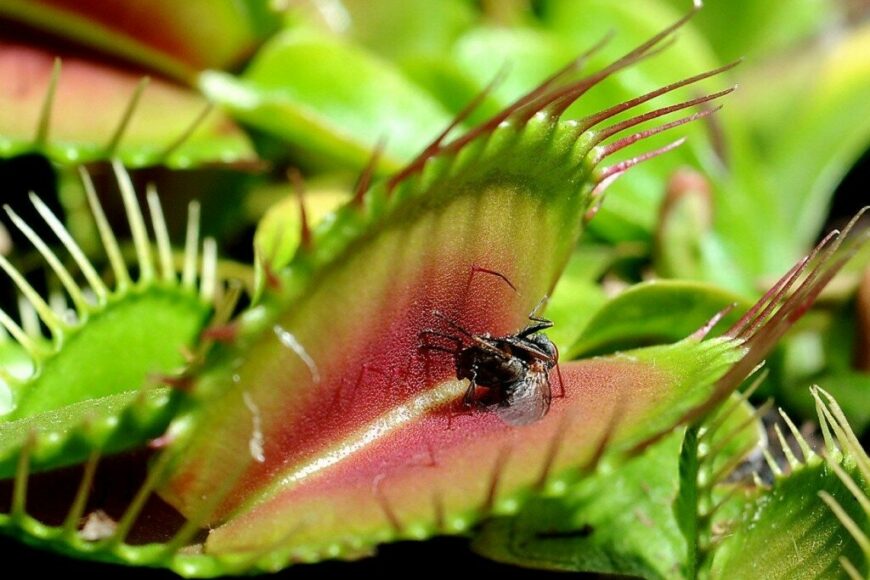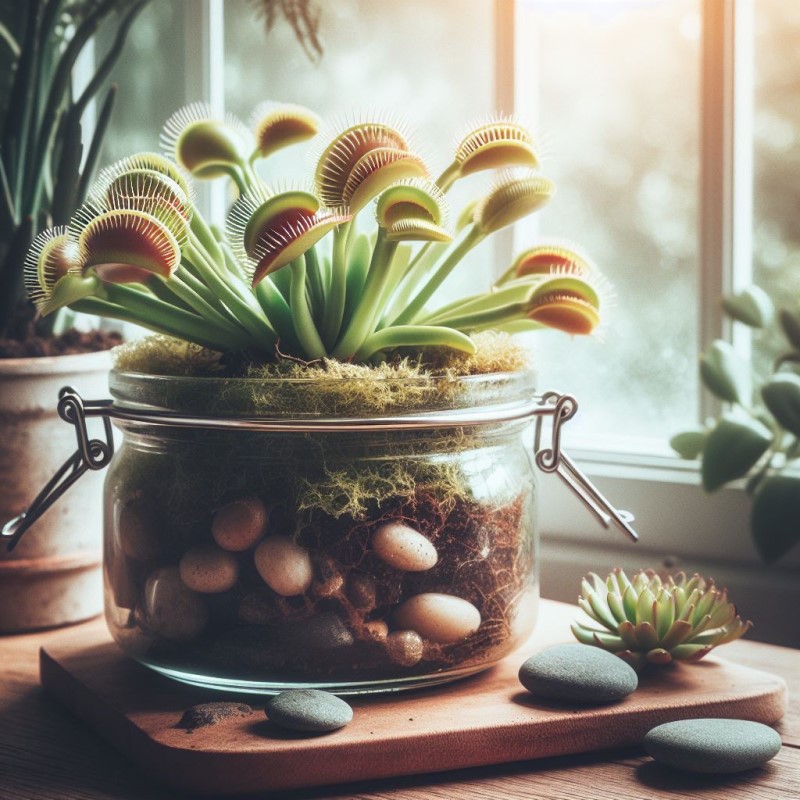
 Name: Venus Flytrap, Venus's Flytrap, Flytrap, Mouse Trap, Insect Eater
Name: Venus Flytrap, Venus's Flytrap, Flytrap, Mouse Trap, Insect Eater Family: Droseraceae
Family: Droseraceae Origins: North Carolina and South Carolina, USA
Origins: North Carolina and South Carolina, USA Humidity: High humidity (50-60%)
Humidity: High humidity (50-60%) Location: Bright, direct sunlight
Location: Bright, direct sunlight Soil: Well-draining potting mix specifically for carnivorous plants
Soil: Well-draining potting mix specifically for carnivorous plants Pests and diseases: Spider mites, mealybugs, fungal diseases
Pests and diseases: Spider mites, mealybugs, fungal diseases Care: Water with distilled or rainwater, fertilize with live or dried insects, repot every 2-3 years
Care: Water with distilled or rainwater, fertilize with live or dried insects, repot every 2-3 years Height of growth: Up to 6 inches tall
Height of growth: Up to 6 inches tall Blooming: Produces small, white flowers in the spring
Blooming: Produces small, white flowers in the springThese unique carnivorous plants are native to the wetlands of North and South Carolina, captivating enthusiasts with their distinctive traps that snap shut on unsuspecting prey.
Content:
Botanical Features
Venus Flytraps have specialized leaves with hinged lobes, armed with trigger-sensitive cilia. Native to nutrient-poor soils, they rely on capturing and digesting insects to supplement their nutrient needs.
Scientific Research on Venus Flytraps
Research studies, such as those published in the “Journal of Experimental Botany,” reveal the intricate mechanisms behind the Venus Flytrap’s carnivorous behavior. The plant’s ability to sense prey movements and its rapid closing response have been subjects of scientific fascination.
Planting Venus Flytraps

Now that you’re intrigued, let’s dive into planting your Venus Flytrap.
Ideal Growing Conditions
Create a habitat that mimics the plant’s native environment – acidic, nutrient-poor soil, high humidity, and bright, indirect sunlight. A mix of sphagnum moss and perlite is a popular choice for potting.
Planting Steps
- Select a pot with good drainage.
- Use a soil mix with high acidity.
- Plant the Venus Flytrap with the rhizome just below the soil surface.
- Water with distilled water or rainwater to avoid minerals that could harm the plant.
Venus Flytrap Care

Watering
Keep the soil consistently moist, using only distilled or rainwater. Venus Flytraps are sensitive to minerals present in tap water.
Feeding
While Venus Flytraps can catch insects, supplement their diet with occasional feedings of small insects. Avoid overfeeding, as this can stress the plant.
Seasonal Changes
In winter, Venus Flytraps experience a dormancy period. Reduce watering and place them in a cool environment to simulate their natural cycle.
Troubleshooting Common Issues
Yellowing Leaves
Yellowing leaves may indicate overwatering or insufficient light. Adjust watering and ensure your plant receives adequate sunlight.
Mold or Fungus
Ensure proper ventilation to prevent the growth of mold or fungus. Adjust watering to maintain a moist, not soggy, environment.
Venus Flytrap FAQ
Can Venus Flytraps eat human food?
No, Venus Flytraps are adapted to a diet of insects and spiders. Feeding them human food can harm the plant.
How often should I feed my Venus Flytrap?
Aim for one to two feedings a month during the growing season, reducing or stopping during dormancy.
Can Venus Flytraps be grown indoors?
Yes, Venus Flytraps can thrive indoors if provided with adequate light and a suitable growing medium.

